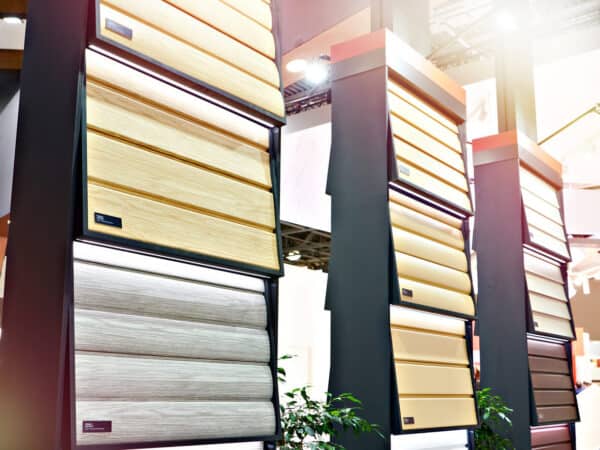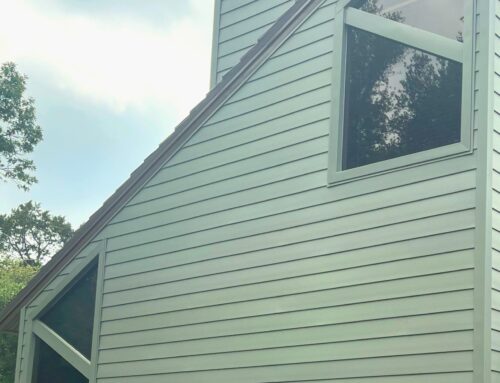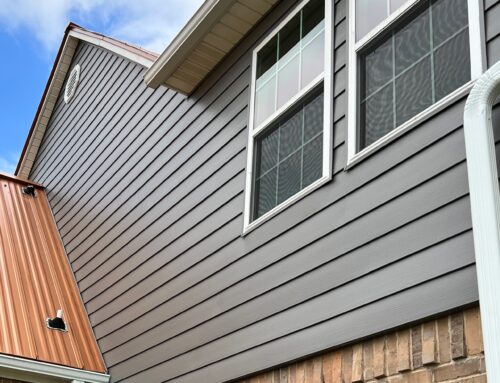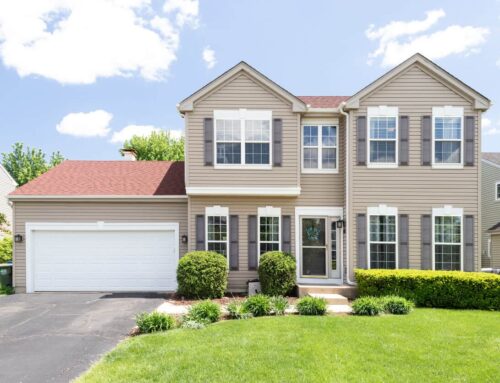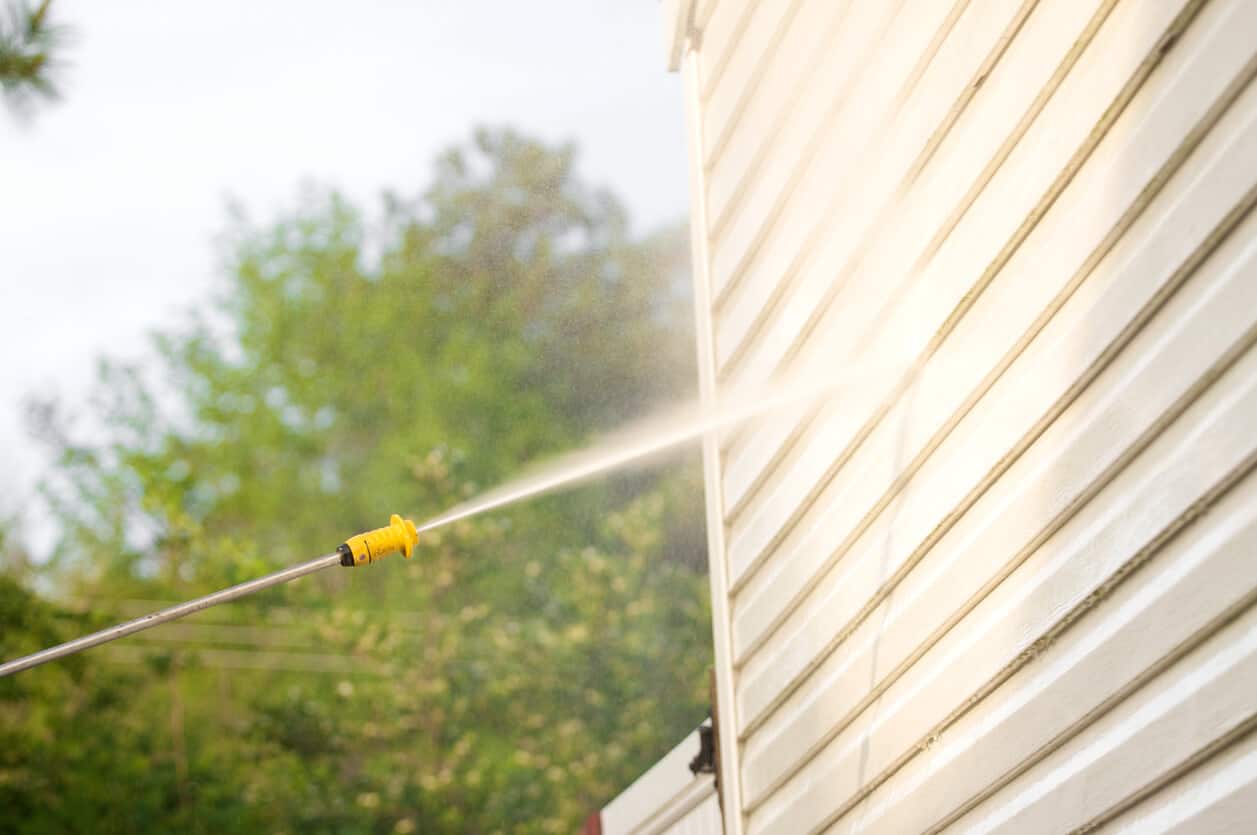
Is it time to replace your rotting wood siding? Let’s compare vinyl siding vs. fiber siding materials, so you know the best choice for your project. But first, allow us to define each product.
Vinyl siding is made primarily from a rigid material called PVC (polyvinyl chloride) resin. This type of siding is securely affixed to a home’s exterior in a manner that allows it to expand and contract with changing temperatures.
Fiber-cement siding is made from a mix of wood pulp and cement that’s formed into long boards or shingles. This type of siding is attached directly to the side of the home with nails.
Let’s compare vinyl and fiber cement siding in terms of durability, maintenance, and value.
Contents
- 1 Vinyl Siding vs. Fiber Siding: Durability
- 2 Vinyl Siding vs. Fiber Cement Siding: Maintenance
- 3 Insulated Vinyl Siding vs. Cement Board Siding: Value
- 4 Get a Free Quote on Insulated Vinyl Siding from Woodbridge Home Solutions
- 5 Key Takeaways
- 5.0.0.1 Vinyl siding is made of PVC resin, which can handle extreme temperature changes.
- 5.0.0.2 Fiber cement planks are made of wood pulp and cement.
- 5.0.0.3 Vinyl siding can withstand harsh temperatures, strong winds, and moisture.
- 5.0.0.4 Vinyl siding requires little maintenance.
- 5.0.0.5 Insulated vinyl siding is more affordable to install and maintain than fiber cement siding.
Contents
- 1 Vinyl Siding vs. Fiber Siding: Durability
- 2 Vinyl Siding vs. Fiber Cement Siding: Maintenance
- 3 Insulated Vinyl Siding vs. Cement Board Siding: Value
- 4 Get a Free Quote on Insulated Vinyl Siding from Woodbridge Home Solutions
- 5 Key Takeaways
- 5.0.0.1 Vinyl siding is made of PVC resin, which can handle extreme temperature changes.
- 5.0.0.2 Fiber cement planks are made of wood pulp and cement.
- 5.0.0.3 Vinyl siding can withstand harsh temperatures, strong winds, and moisture.
- 5.0.0.4 Vinyl siding requires little maintenance.
- 5.0.0.5 Insulated vinyl siding is more affordable to install and maintain than fiber cement siding.
- 5.1 Related Posts
Vinyl Siding vs. Fiber Siding: Durability
Of course, you want your siding to withstand all that nature throws at it, so you must understand each material’s durability.
Vinyl siding is used in many different climate zones. This type of siding can withstand areas of the country with extreme heat and freezing temperatures.
Vinyl siding can also stand up to the wind. Parts of Texas have building-code requirements that require siding products that can withstand 150 mph winds. Some vinyl siding can meet and even exceed these expectations.
On the other hand, fiber siding is susceptible to complications when temperatures fluctuate.
Fiber cement siding can also hold moisture, leading to rot, mold growth, and poor indoor air quality.
Finally, fiber cement boards sometimes become damaged during the shipping and installation process, which makes one wonder about the product’s durability.
Vinyl Siding vs. Fiber Cement Siding: Maintenance
One of the biggest selling points of vinyl siding is that it is a low-maintenance product. Unlike fiber cement siding, vinyl siding never requires painting. If you have recently priced a whole house exterior painting job for your traditional wood siding, you know this is a huge benefit.
Instead, this low-maintenance option only requires periodic cleaning with a garden hose.
However, fiber cement planks must be periodically caulked and repainted to maintain the appearance and prevent moisture damage.
Insulated Vinyl Siding vs. Cement Board Siding: Value
When comparing fiber cement siding and insulated siding, we must consider the cost because most homeowners work with a fixed budget.
Insulated vinyl siding (and standard vinyl siding) costs less to install than fiber cement products, and there are no long-term maintenance costs.
In fact, the cost of having fiber cement siding installed is 51 percent higher than vinyl siding installation costs. When you figure in the anticipated maintenance cost of fiber cement products, there’s really no comparison.
Get a Free Quote on Insulated Vinyl Siding from Woodbridge Home Solutions
Choosing between insulated vinyl siding, aluminum siding, and fiber cement siding is a serious decision. Your home is one of your largest financial investments, and you need to do what you can to protect it.
Before you make a decision, talk with a siding contractor you can trust at Woodbridge Home Solutions. We have helped homeowners replace and maintain the exterior walls of their homes for more than 30 years. During that time, we have learned a thing or two about all types of material. Schedule a consultation to pick our brains about which products we recommend.
Key Takeaways
-
Vinyl siding is made of PVC resin, which can handle extreme temperature changes.
-
Fiber cement planks are made of wood pulp and cement.
-
Vinyl siding can withstand harsh temperatures, strong winds, and moisture.
-
Vinyl siding requires little maintenance.
-
Insulated vinyl siding is more affordable to install and maintain than fiber cement siding.


